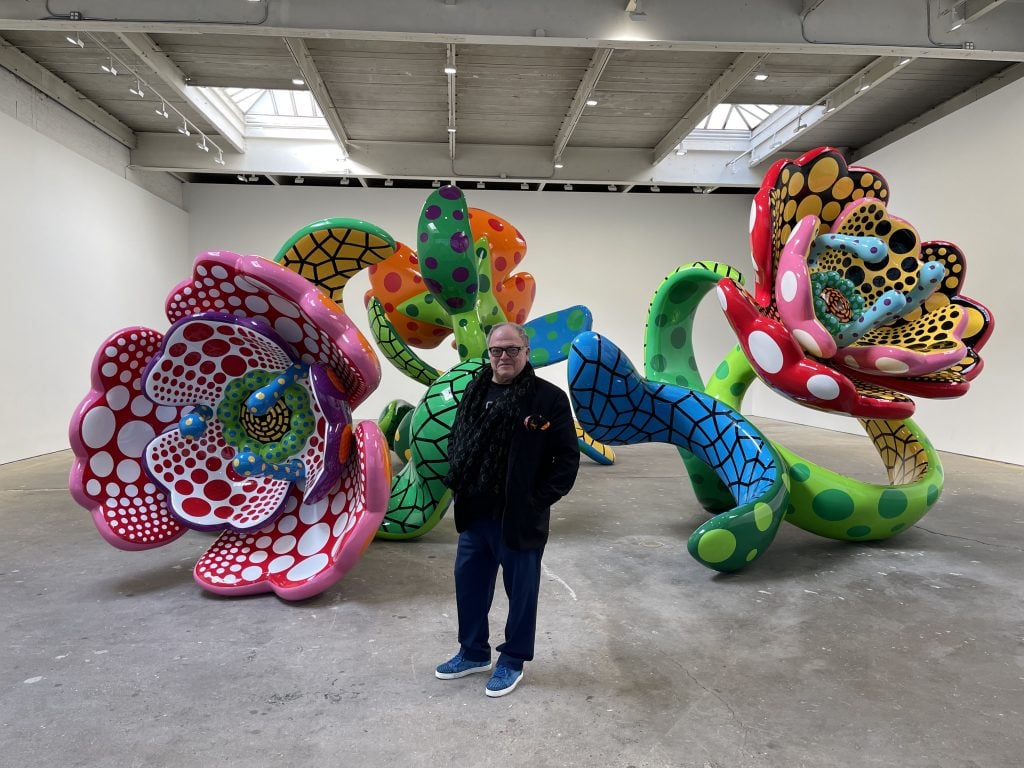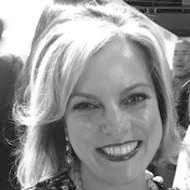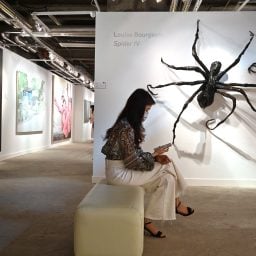Big auction seasons in New York always feel like marathons. “How exhausting can it get, really?” I wonder each time before things get going—only to find myself feeling delirious by the end.
The banking sector in crisis and rising interest rates are adding to the already high stakes of the bellwether season underway, where there are auctions at Christie’s, Sotheby’s, and Phillips—with a cumulative art hoard estimated at $1.3 billion to $1.9 billion—packed together with smaller sales at Bonhams and Doyle, at least five art fairs, and countless gallery openings. Throw into the mix galas for MoMA PS1 and the Whitney, and countless gallery dinners…. Well, no human can do it all.
So how do the seasoned collectors budget their time and money during the art onslaught?
“When I look at what the next two weeks look like, I remind myself to reframe it,” said Scott Lorinsky, a collector who seems to be able to be everywhere.
He thinks of the art circuit as a circus, in which he has a part to play.
“I am invited into the big tent, and my role is to suit up and show up, and go and cheer and buy the popcorn,” said Lorinsky, a managing director at an alternative asset firm in New York. “And so even when it’s a little overwhelming, who am I to complain about this embarrassment of social events in the community that I’m proud to be part of?”
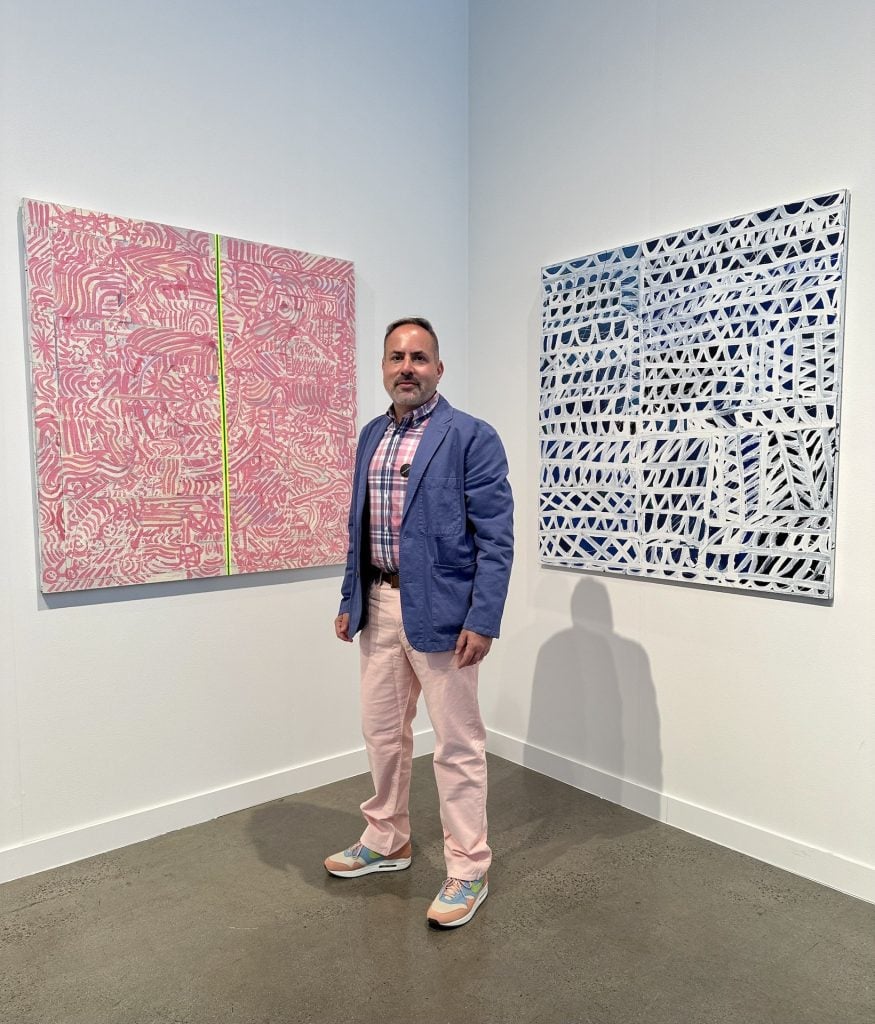
Scott Lorinsky with Pam Glick works at Stephen Friedman’s booth at Independent New York. Courtesy: Scott Lorinsky
A board member of the Center for Curatorial Studies at Bard College, Lorinsky doesn’t prioritize the auctions, although he went to the previews and left feeling “gobsmacked,” he said.
Instead, he focuses on art fairs and gallery shows where he can directly support artists and their dealers.
“Typically, I always end up buying something at Independent and at Frieze. But I am going to Basel too. So, you don’t want to overcommit in May, when the largest and perhaps most important art fair is just weeks away.”
To date, he’s built a collection of some 800 artworks. He doesn’t work with an adviser and trusts his eye, his gut, and the relationships he’s built over the years. While he’d see hundreds of booths, Lorinsky usually buys from six to 10 galleries, including Andrew Kreps and Gordon Robichaux.
At the VIP opening of the Independent art fair on May 11, Lorinsky was drawn to abstract paintings by Pam Glick at London’s Stephen Friedman gallery, which is opening a branch in Tribeca. But he wasn’t ready to pull the trigger yet (prices range from $12,000 to $70,000). The gallery will present more paintings by the artist at Frieze. When we caught up at the gallery’s dinner at La Mercerie in SoHo, he said he was committed to buying a painting by Glick but was looking for the right size, not too small, not too big.
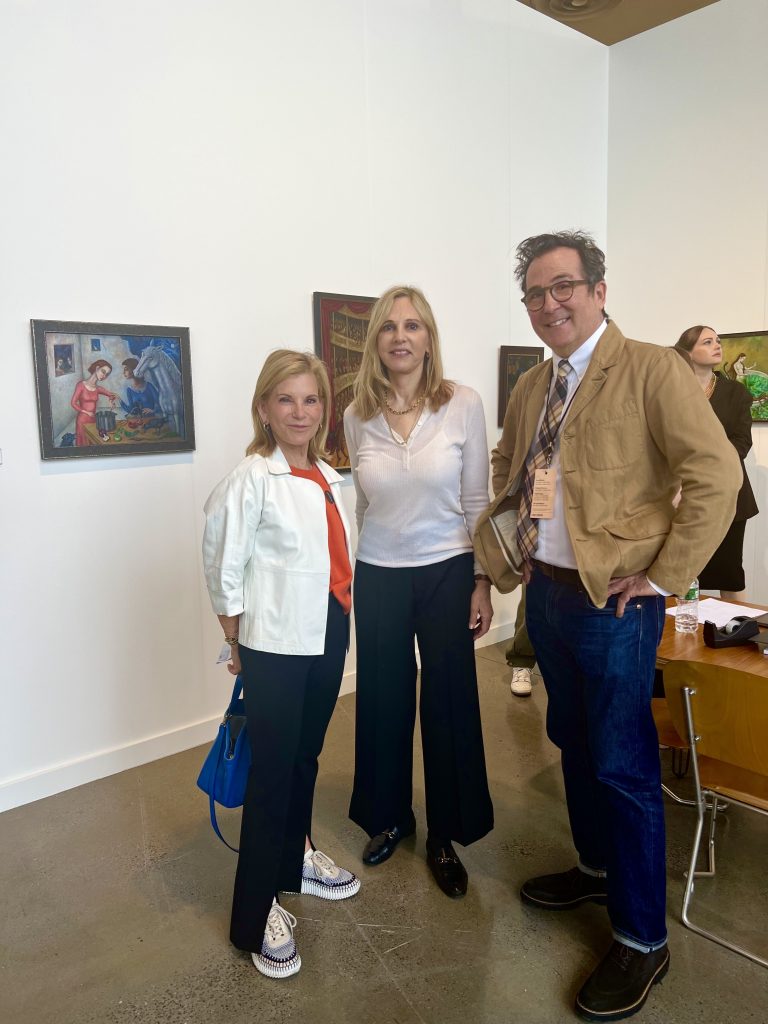
Collector Lonti Ebers, center, next to the paintings by Gina Litherland, at Independent New York. Photo: Katya Kazakina.
Just around the corner from Glick’s paintings at Independent, MoMA trustee Lonti Ebers found herself charmed by the canvases of Gina Litherland, a Midwestern Surrealist with imagery rooted in Nordic mythology, at Corbett vs. Dempsey gallery. She rushed to the booth first thing to grab a ceramic sculpture by another gallery artist, Magalie Guerin, a French-Canadian who lives in Marfa, Texas. Priced at $6,000, it was a no-brainer. (Three displayed pieces were sold within first 30 minutes.)
“Then I looked up,” Ebers said, and saw Litherland’s paintings, priced at $15,000 to $30,000. “I am pretty quick to decide. If they told me it was $250,000, it would have been a different story.”
Her next stop that day was TEFAF at the Park Avenue Armory, where the aisles were more packed than ever. New York’s top museum directors, including the Met’s Max Hollein and MoMA’s Glenn Lowry, schmoozed and shook hands with collectors and dealers. CNN’s Anderson Cooper paused in front of a $4.5 million Giacommetti sculpture at Thomas Gibson Fine Art. Actors Colin Jost and John Krasinski inspected Impressionist canvases by Richard Green.
Ebers made a beeline for Tina Kim Gallery’s booth to see paintings by Pacita Abad, whose work she collects. She likes art fairs because they allow her to scan quickly and keep moving, whereas she doesn’t attend the auctions unless she’s selling something. And, all the while, she’s keeping Art Basel in the back of her mind. “I wouldn’t buy anything that’s less than great because I have expectations for Basel,” she said.
As for social events, it all boils down to geography when she’s deciding which of her four dinners to join.
“I live downtown,” Ebers said. “I am not going to go to something that’s miles away.”
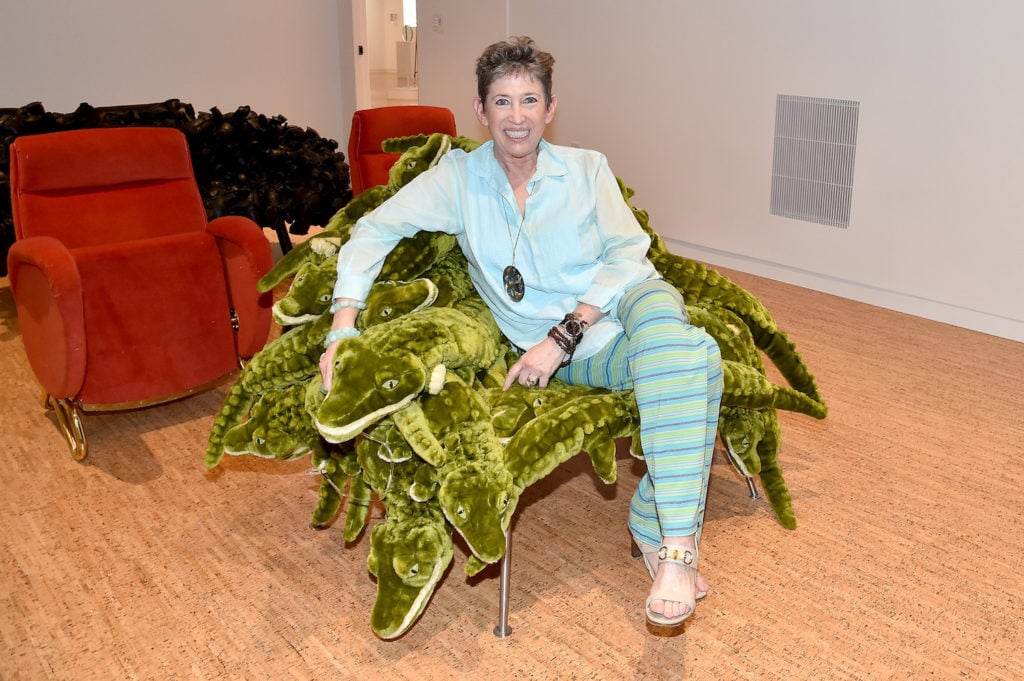
Beth Rudin DeWoody at her new private art space, the Bunker. Photo ©Patrick McMullan.
Beth Rudin Dewoody, a trustee of the Whitney, isn’t too keen on dinners either.
“They end up being too late for me,” she said. “And they are too loud. I try to pick and choose. I may go if it’s something early, or it’s a good friend.”
During her 10-day stay in New York, she’ll spend most of her time going to as many art fairs and galleries as she can with her curator.
“I am going to do Frieze, try to do NADA, Springbreak, and Independent,” she said. “If I can, I’ll fit in the Future Fair.”
She may see auction previews, and perhaps she’ll have time to hit some museums. But she absolutely must attend the Whitney board meeting and its gala next week.
“I get a little overwhelmed,” she said. “I am not supposed to spend so much. My assistant told me to slow down on my art. It’s hard for me.”
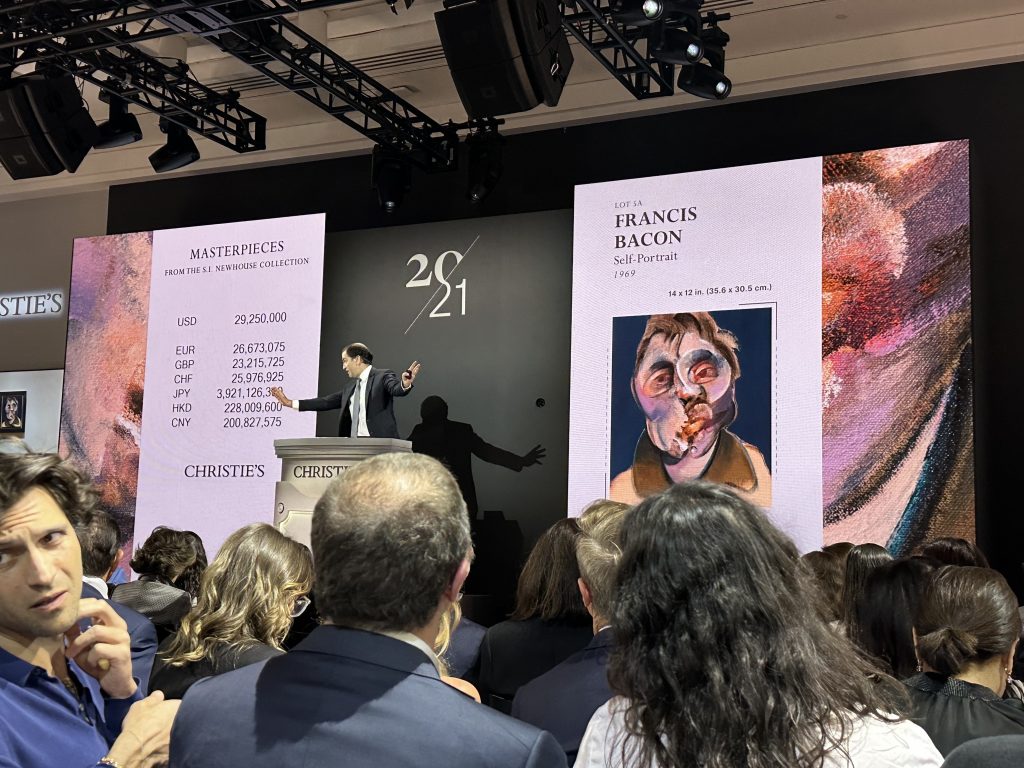
Alexander DiPersia, left, at Christie’s auction of S.I. Newhouse collection on May 11, 2023. Courtesy: Ray Waterhouse, Fine Art Brokers
Other collectors have to be more selective and opportunistic. Alexander DiPersia, feeling somewhat tapped-out after putting up a show of Basquiat and A.R. Penck in Paris, said he is going to bid for a George Condo painting at the S.I. Newhouse auction at Christie’s. It was estimated at $1 million to $1.5 million, and fetched $2.7 million, including fees.
“If I get the Condo, then I am out,” he said before the auction. “I would love to live with that painting. That would probably mean I would have to sell another Condo I own. I don’t need three Condos.”
As opposed to collectors who patronize galleries, DiPersia’s focus is the auctions, whose previews he attends multiple times.
“It’s a full-time job,” he said. “Primary prices have gotten so high that if you look at any of the stuff from big galleries you’d be insane not to try to buy a great George Condo from auction and not from Hauser & Wirth.” (For example, prices for new Condo paintings at his most recent show in Los Angeles ranged from $2.8 million to $3.6 million.)
New York collector Max Dolgicer agreed. “Galleries keep increasing prices for their hot artists,” he said. He keeps a list of the artists he’s interested in: Rashid Johnson, Barbara Kruger, Mark Bradford, Tracey Emin.
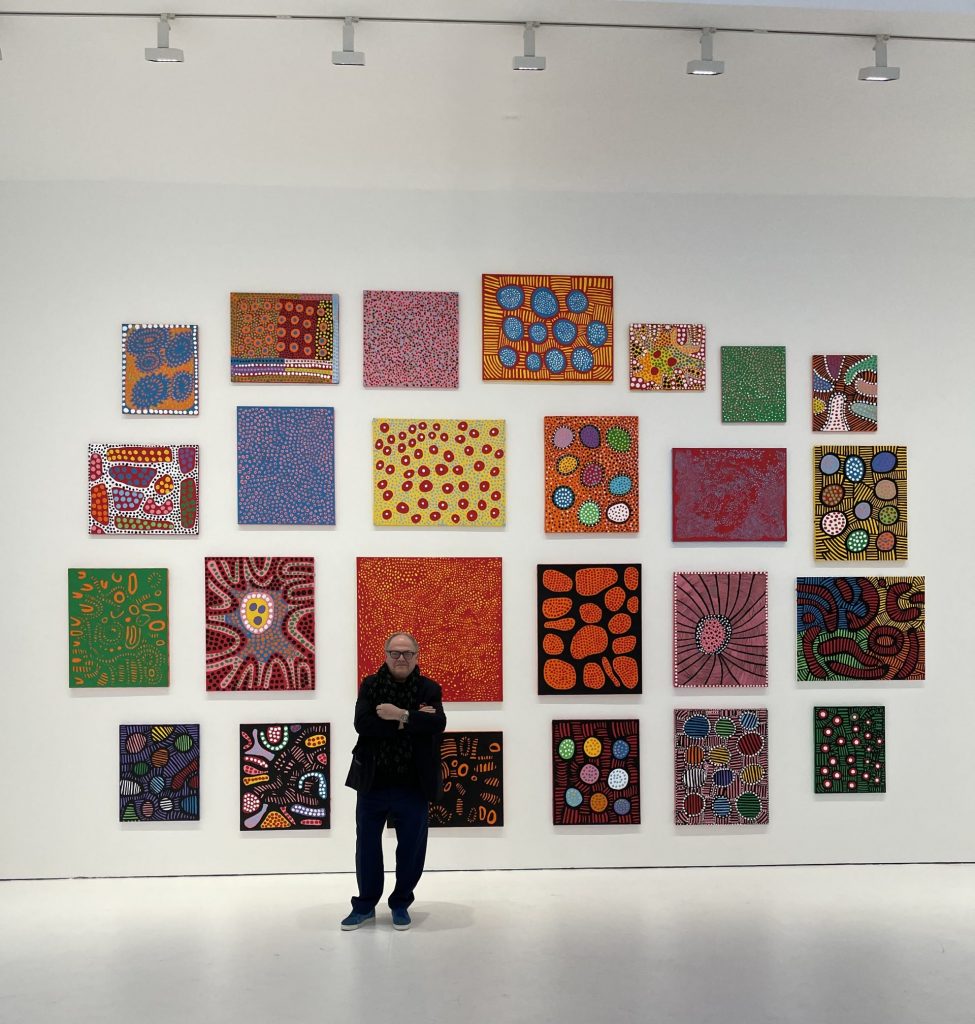
Max Dolgicer at the Yayoi Kusama opening at David Zwirner gallery on May 11, 2023. Courtesy: Max Dolgicer
He scours auctions previews for top material and deals. “You might get lucky and buy something cheaper at auction” than at the gallery, he said. Which is shocking, considering that auction houses charge as much as 27 percent fees on the hammer price of $2 million or less. “Even with those fees it’s cheaper,” Dolgicer said.
In addition to the auctions, Dolgicer went to TEFAF—“It’s a joy! It’s like going to St. Barthes. Who wouldn’t go?” he said—and Frieze, which opens on May 17 in Hudson Yards. Then there are dinners and galas.
If that wasn’t enough, Dolgicer decided to make “a little detour” to see Emin’s exhibition in Rome, leaving on Friday and returning on Monday, in time for Christie’s evening sale of 21st-century art. “Her paintings are getting better and better,” he said. “It’s a short trip but I think it’s worth it.”
While the commerce draws international collectors to New York, it’s not the only priority. Greek shipowner George Economou, who is on the board of DIA Art Foundation, uses his time to meet with museum curators and visit artist studios.
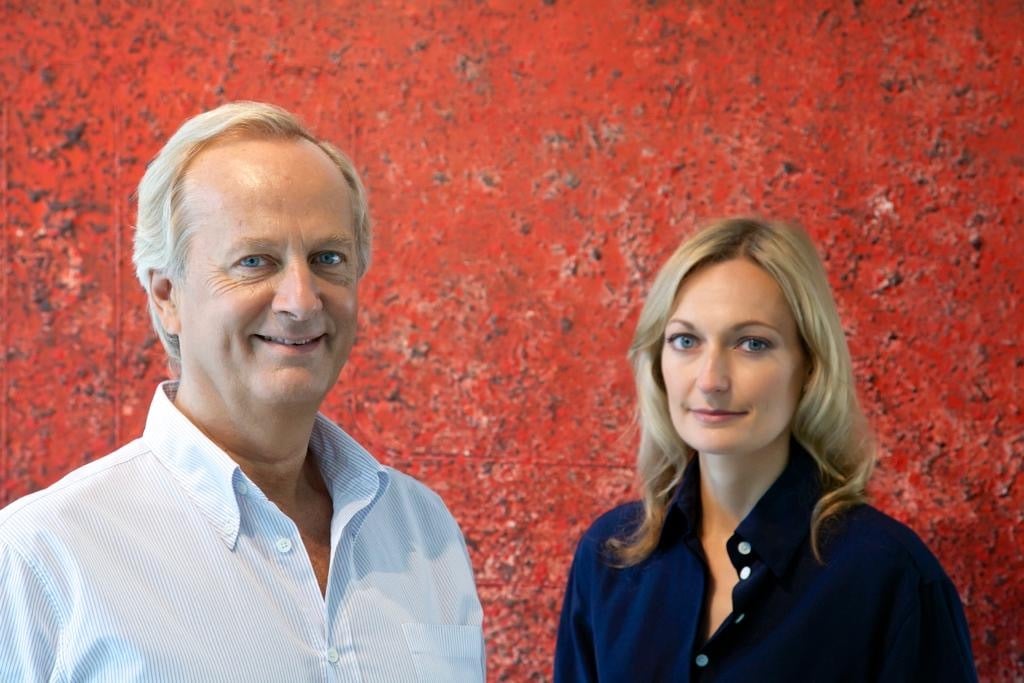
Greek collector George Economou, left, and his collection director Skarlet Smatana. Courtesy: The George Economou Collection
“We discuss how we can assist museums with their collections in various ways,” said Skarlet Smatana, director of Economou’s collection. “That’s probably our first priority.”
They follow a daily schedule to ensure they get everything done, getting auction viewings out of the way first. “We are always looking at 20th-century historical material—that never changes,” she said. (They loved Francis Bacon’s self portrait and the de Kooning from the Newhouse collection.) They are also adding more work by mid-career women artists. Next year, the foundation will feature Dana Schutz in its annual exhibition in Athens.
“My job is to bring him the best and most suited examples,” Smatana said. Economou then decides what’s feasible.
But not all collectors in town are buyers, of course. Helsinki-based John Lindell is visiting New York for the sale of his four artworks at Phillips, including Andy Warhol’s storied Self-Portrait (Fright Wig).
After collecting for 40 years, Lindell, who turns 70 next year, is now thinking about selling. But, as any seasoned collector knows, even when you are not actively looking for any art to buy, there are always temptations.
“Sometimes you’ve been looking for something for years, and then you see it and you have to buy it,” Lindell said. “With any luck, I will return to Europe not having bought anything.”
